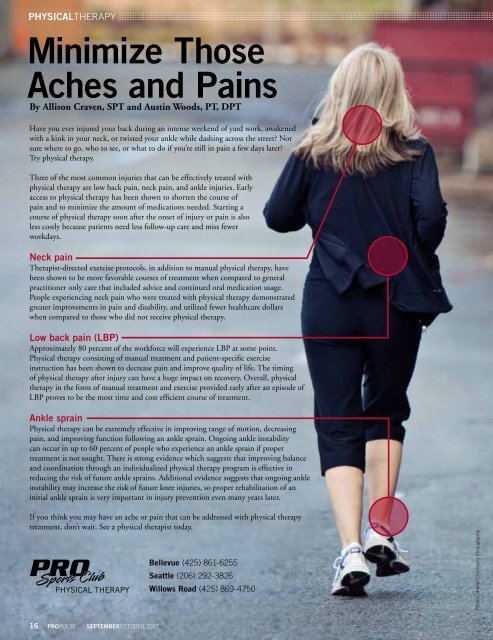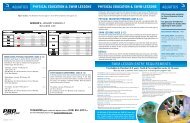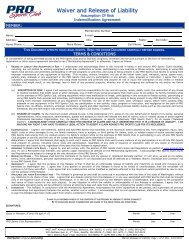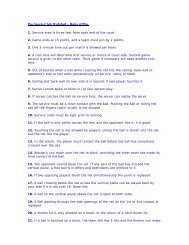Leading by exampLe - PRO Sports Club
Leading by exampLe - PRO Sports Club
Leading by exampLe - PRO Sports Club
Create successful ePaper yourself
Turn your PDF publications into a flip-book with our unique Google optimized e-Paper software.
president’smessagephysicaltherapyMinimize ThoseAches and PainsBy Allison Craven, SPT and Austin Woods, PT, DPTHave you ever injured your back during an intense weekend of yard work, awakenedwith a kink in your neck, or twisted your ankle while dashing across the street? Notsure where to go, who to see, or what to do if you’re still in pain a few days later?Try physical therapy.Three of the most common injuries that can be effectively treated withphysical therapy are low back pain, neck pain, and ankle injuries. Earlyaccess to physical therapy has been shown to shorten the course ofpain and to minimize the amount of medications needed. Starting acourse of physical therapy soon after the onset of injury or pain is alsoless costly because patients need less follow-up care and miss fewerworkdays.Neck painTherapist-directed exercise protocols, in addition to manual physical therapy, havebeen shown to be more favorable courses of treatment when compared to generalpractitioner only care that included advice and continued oral medication usage.People experiencing neck pain who were treated with physical therapy demonstratedgreater improvements in pain and disability, and utilized fewer healthcare dollarswhen compared to those who did not receive physical therapy.Low back pain (LBP)Approximately 80 percent of the workforce will experience LBP at some point.Physical therapy consisting of manual treatment and patient-specific exerciseinstruction has been shown to decrease pain and improve quality of life. The timingof physical therapy after injury can have a huge impact on recovery. Overall, physicaltherapy in the form of manual treatment and exercise provided early after an episode ofLBP proves to be the most time and cost efficient course of treatment.Ankle sprainPhysical therapy can be extremely effective in improving range of motion, decreasingpain, and improving function following an ankle sprain. Ongoing ankle instabilitycan occur in up to 60 percent of people who experience an ankle sprain if propertreatment is not sought. There is strong evidence which suggests that improving balanceand coordination through an individualized physical therapy program is effective inreducing the risk of future ankle sprains. Additional evidence suggests that ongoing ankleinstability may increase the risk of future knee injuries, so proper rehabilitation of aninitial ankle sprain is very important in injury prevention even many years later.If you think you may have an ache or pain that can be addressed with physical therapytreatment, don’t wait. See a physical therapist today.Bellevue (425) 861-6255Seattle (206) 292-3826Willows Road (425) 869-4750Photos: Arlene Chambers Photography16 <strong>PRO</strong>PULSE SEPTEMBEROCTOBER 2012
















